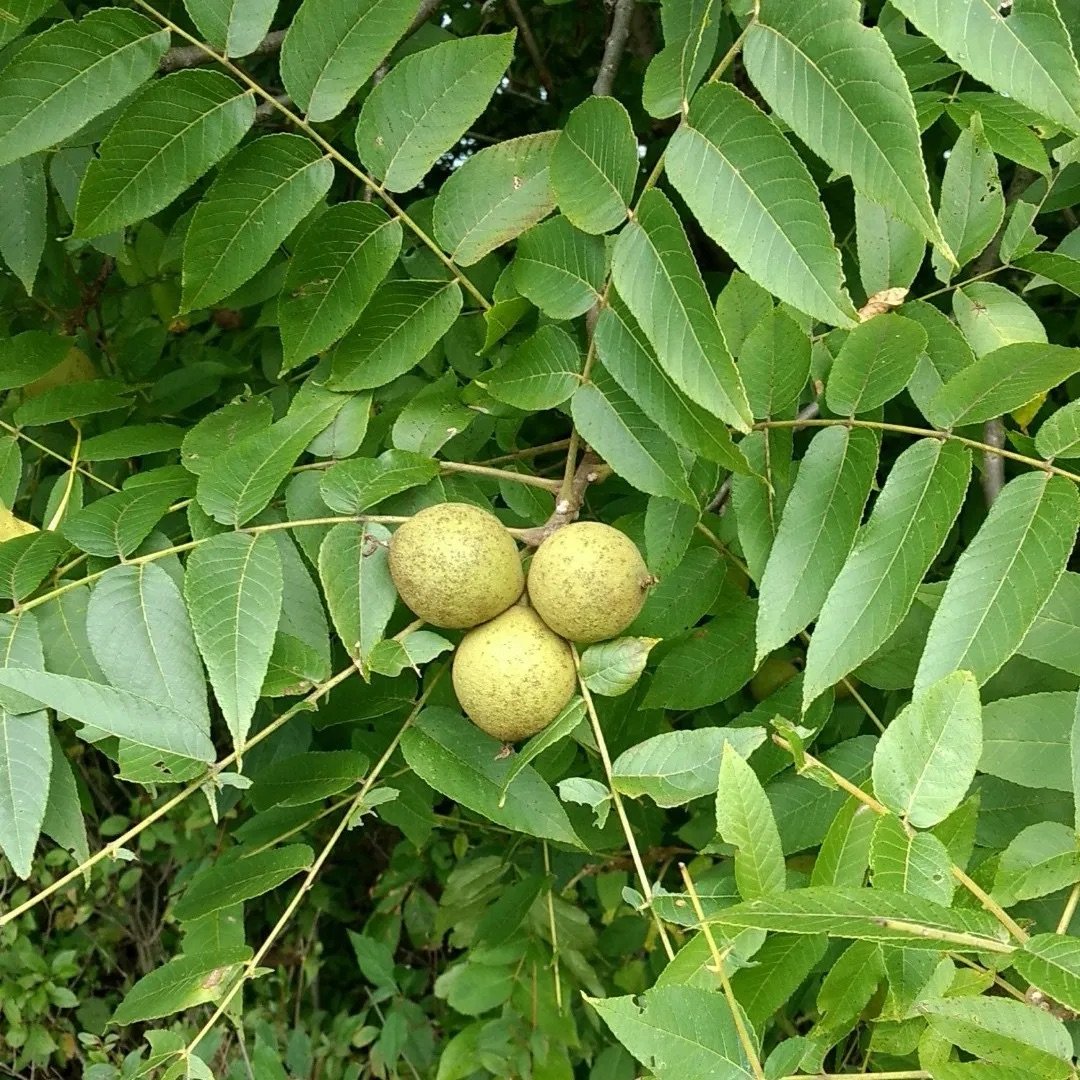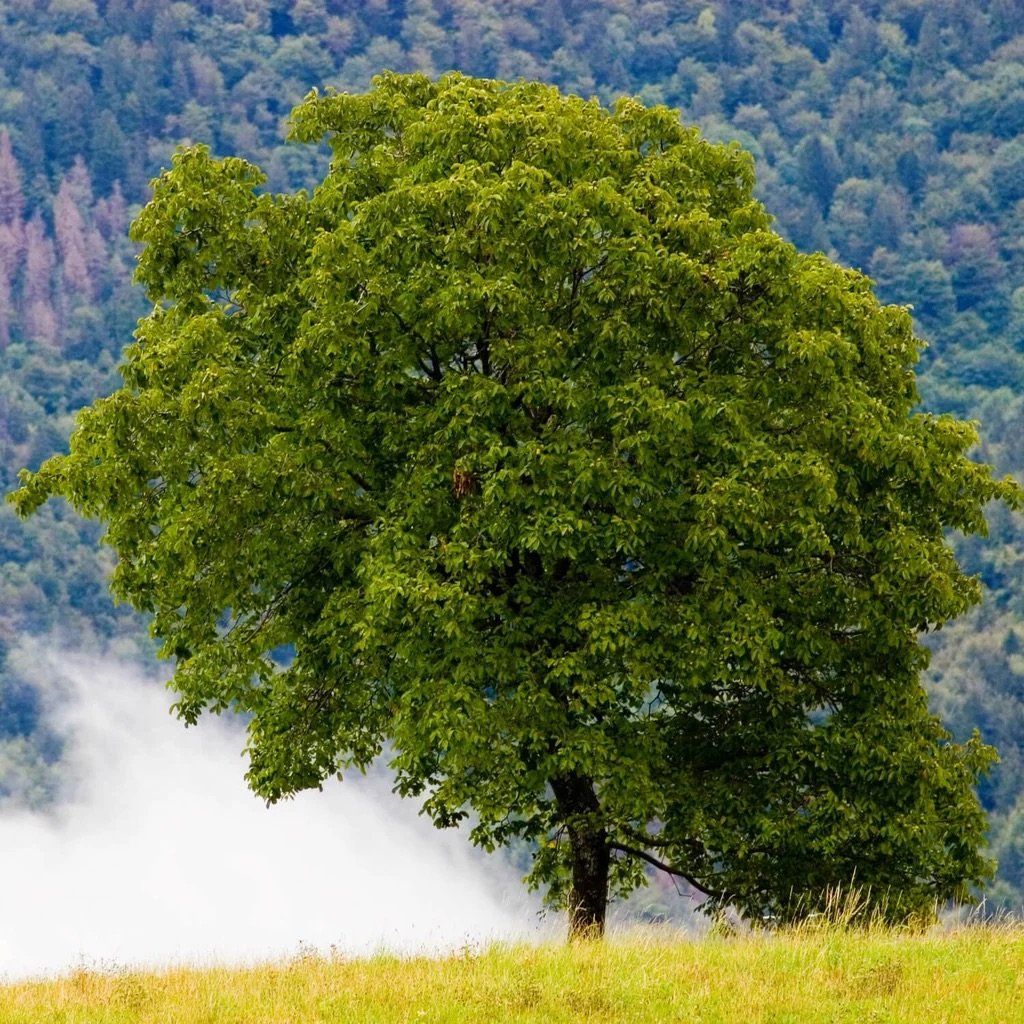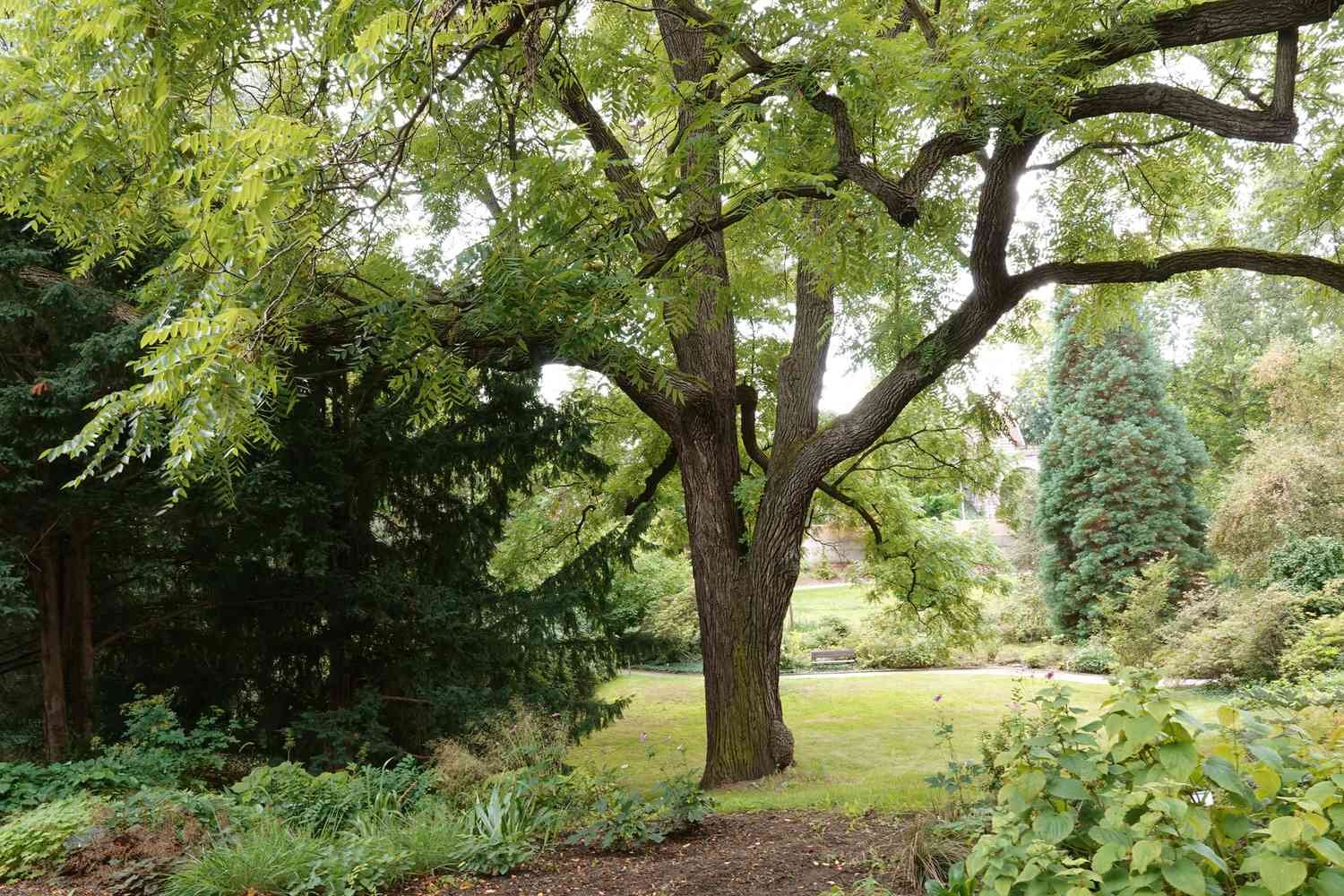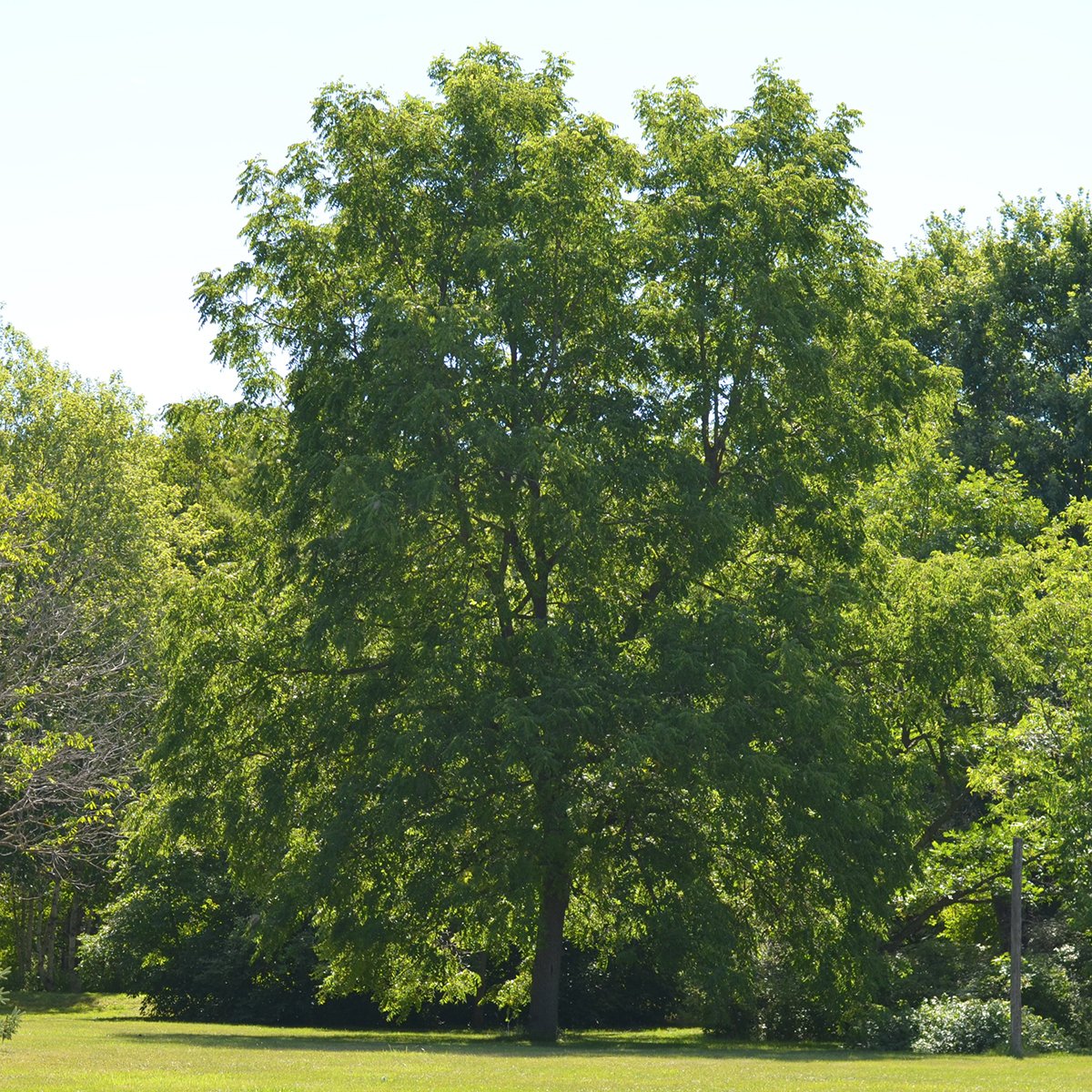Black Walnut
Juglans nigra. Black Walnut is highly prized for its beautiful wood and delicious nuts. The species is native to North America and grows mostly in riparian zones, from southern Ontario, west to southeast South Dakota, south to Georgia, northern Florida and southwest to central Texas. It is one of the most abundant trees in the eastern US, particularly the Northeast, and its numbers are increasing due to epidemics that have affected other tree species, including emerald ash borer, chestnut blight, butternut canker, and so on. It is allelopathic, releasing chemicals from its roots that prevent other plants from growing and give the tree an advantage, but there is no scientific consensus that this is a primary competitive factor. There are many pants that are juglans tolerant.
Seedlings typically bare in 7-10 years and the tree can grow to 100 FT though more typically around 50-70 FT with straight trunk if in forest-like or dense conditions but a spreading habit and short trunk if grown in the open. Black walnuts have twice the protein of English walnuts. Their nuts are difficult to crack but have a strong and unusual flavor. Technically they are self-fertile but they will set a larger crop if you plant 2 seedlings, 2 different grafted varieties or a seedling and a grafted tree. Deeply tap-rooted, make sure you choose the right location. It will grow in closed forests but requires full sun for optimal nut production. The tree is primarily a pioneer species similar to red and silver maple and black cherry and is commonly found along roadsides, fields, and forest edges.
Black walnut is an important tree commercially, as the wood is a deep brown color and easily worked. In 2017, the United States Department of Agriculture valued U.S. walnut timber at $530 billion.
nigra: straight species, wild sourced seedlings
Kwik Krop: So called due to its precocious nature, quick to bare, also known as Boellner. Relatively thin shelled, medium sized nut with a plump kernel that is productive.
Sold as bare root trees 24-36” tall.
Juglans nigra. Black Walnut is highly prized for its beautiful wood and delicious nuts. The species is native to North America and grows mostly in riparian zones, from southern Ontario, west to southeast South Dakota, south to Georgia, northern Florida and southwest to central Texas. It is one of the most abundant trees in the eastern US, particularly the Northeast, and its numbers are increasing due to epidemics that have affected other tree species, including emerald ash borer, chestnut blight, butternut canker, and so on. It is allelopathic, releasing chemicals from its roots that prevent other plants from growing and give the tree an advantage, but there is no scientific consensus that this is a primary competitive factor. There are many pants that are juglans tolerant.
Seedlings typically bare in 7-10 years and the tree can grow to 100 FT though more typically around 50-70 FT with straight trunk if in forest-like or dense conditions but a spreading habit and short trunk if grown in the open. Black walnuts have twice the protein of English walnuts. Their nuts are difficult to crack but have a strong and unusual flavor. Technically they are self-fertile but they will set a larger crop if you plant 2 seedlings, 2 different grafted varieties or a seedling and a grafted tree. Deeply tap-rooted, make sure you choose the right location. It will grow in closed forests but requires full sun for optimal nut production. The tree is primarily a pioneer species similar to red and silver maple and black cherry and is commonly found along roadsides, fields, and forest edges.
Black walnut is an important tree commercially, as the wood is a deep brown color and easily worked. In 2017, the United States Department of Agriculture valued U.S. walnut timber at $530 billion.
nigra: straight species, wild sourced seedlings
Kwik Krop: So called due to its precocious nature, quick to bare, also known as Boellner. Relatively thin shelled, medium sized nut with a plump kernel that is productive.
Sold as bare root trees 24-36” tall.
Juglans nigra. Black Walnut is highly prized for its beautiful wood and delicious nuts. The species is native to North America and grows mostly in riparian zones, from southern Ontario, west to southeast South Dakota, south to Georgia, northern Florida and southwest to central Texas. It is one of the most abundant trees in the eastern US, particularly the Northeast, and its numbers are increasing due to epidemics that have affected other tree species, including emerald ash borer, chestnut blight, butternut canker, and so on. It is allelopathic, releasing chemicals from its roots that prevent other plants from growing and give the tree an advantage, but there is no scientific consensus that this is a primary competitive factor. There are many pants that are juglans tolerant.
Seedlings typically bare in 7-10 years and the tree can grow to 100 FT though more typically around 50-70 FT with straight trunk if in forest-like or dense conditions but a spreading habit and short trunk if grown in the open. Black walnuts have twice the protein of English walnuts. Their nuts are difficult to crack but have a strong and unusual flavor. Technically they are self-fertile but they will set a larger crop if you plant 2 seedlings, 2 different grafted varieties or a seedling and a grafted tree. Deeply tap-rooted, make sure you choose the right location. It will grow in closed forests but requires full sun for optimal nut production. The tree is primarily a pioneer species similar to red and silver maple and black cherry and is commonly found along roadsides, fields, and forest edges.
Black walnut is an important tree commercially, as the wood is a deep brown color and easily worked. In 2017, the United States Department of Agriculture valued U.S. walnut timber at $530 billion.
nigra: straight species, wild sourced seedlings
Kwik Krop: So called due to its precocious nature, quick to bare, also known as Boellner. Relatively thin shelled, medium sized nut with a plump kernel that is productive.
Sold as bare root trees 24-36” tall.




